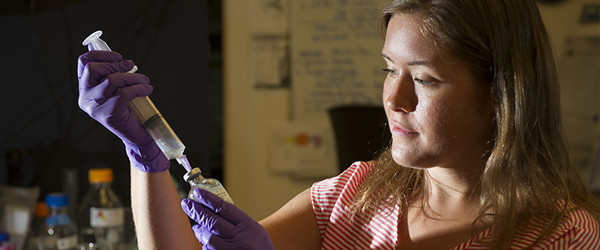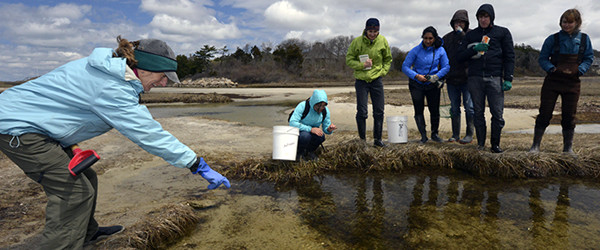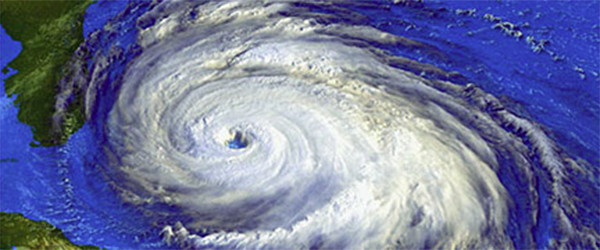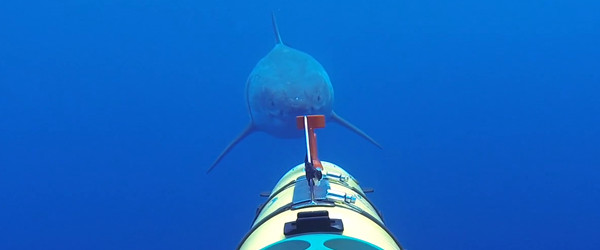R/V Oceanus Lab Features & Facilities
Laboratories and science spaces in general are configured to allow efficient installation of scientific equipment with a minimum of effort on the part of scientists and technicians. Benches, shelving, electrical power, water, communications, tie-downs and storage are provided. A general description of these items follows.
Electrical Power
All electrical power on the ship is generated as 480VAC at 60 cycles. The voltage and frequency are precisely regulated at the generator units. All laboratory spaces are provided with numerous 120VAC electrical outlets on 20 amp circuits. 480VAC outlets on 30 amp circuits are available on the weather decks and in all laboratory spaces. 60A 3-phase 220VAC power is available.One Uninterrupted Power Supply (UPS) unit is provided in the Main Laboratory for general scientific use, rated at 5kw 120VAC. In addition, a smaller UPS unit is located in the Top Lab dedicated to maintaining data logging system integrity
Air Conditioning/Heating
All internal spaces on Oceanus are temperature and humidity controlled by a centralized air conditioning and heating system.Fresh Water and Sinks
The Main Lab and Wet Lab have hot and cold fresh water outlets conveniently positioned at sink locations. Two deep sinks are provided in the forward end of the Main Lab and one is located in the Wet Lab. The sinks drain directly into the scuppers, so acids and chemical wastes may not be disposed of in the sinks. Standard faucet/taps are provided at the sinks, as are garden hose fittings. Fresh water outlets with garden hose fittings are provided on the 01 Deck and at two locations on the Main Deck which are readily accessible to work sites and to portable laboratory vans.Salt Water
Sea water from the ship’s fire and sanitary system is available on the Main Deck and at the laboratory sink locationsUncontaminated Sea Water
Uncontaminated sea water is available in the Main Lab and the Wet Lab at sink locations. The sea suction is located in the bow of the ship as far forward and as far down as possible. The pump is located adjacent to the intake, with a flow rate of approximately 50 gallons per minute. The pump impeller, pump casing, all piping and the filters are non-metallic. Dual filters to screen out debris and seaweed are located on the discharge side of the pump. High sea states and bubble entrapment at the bow can cause the discharge to become aerated. A debubbler is recommended for instruments sensitive to entrapped gases. To avoid back pressure and to assure continuous flushing, the discharge has full flow overboard and the user taps into the flow as needed.Deionized Water
A Millipore Milli-Q+ distilled water deionizer unit is located in the forward end of the Main Laboratory. The water source for the deionizing filter unit is distilled water pumped directly from the ship's evaporator and stored in a 30-gallon stainless steel head tank located on the deck above.Compressed Air
Available in all deck and laboratory spaces at nominal 125 psi.Intercom/Telephone
An intercom system is installed on the ship to facilitate communication. This system incorporates the traditional “squawk box” speaker unit with a handset unit for private exchange. The units are distributed throughout the vessel. Three units are located in the Main Lab, one each in the Wet Lab and the Top Lab, on the bridge, at all winch control stations, at two locations on the working deck area and in the Mess.A Panasonic telephone PABX is also installed on the ship. Telephones are located on the Bridge, the communications center, all laboratories and the Master’s, Chief Engineer’s and Chief Scientist’s staterooms. The telephones can be used for internal communication at sea. In port, the PABX provides access to the local shore telephone line. With notice and with the proper hookup, telephones of the PABX system can directly access the INMARSAT communication system. Internet connection is available at the WHOI dock.
Benches
Benches are provided in the Main Lab and in the Wet Lab for the general use of scientists. Standard benches are 8 feet long x 32 inches wide x 36 inches high. Benches are permanently mounted along the bulkheads. Additional free-standing benches of the standard size are available to be positioned in the labs to meet the needs of individual projects. Customized benches can be provided as needed. Each bench unit is fitted with a full storage shelf below.Tie-downs
All laboratory and deck spaces are provided with a means of securing equipment at sea, known collectively as tie-downs. Laboratory decks are fitted with 3/8” bolt receptors located on 2 ft. x 2 ft. centers. All overhead and bulkhead surfaces are equipped with "Unistrut" channels on 2 ft. centers. The external working decks surfaces are fitted with flush stainless steel 1" bolt receptors on 2 ft. x 2 ft. centers. The ship will provide all bolts, chain, eye-bolts, chain binders, aircraft straps and specialized fittings for securing science equipment. Welding to the ship's structure is not permitted anywhere on the vessel. If welding is required to properly secure a piece of equipment, steel plates will be bolted in place and the welding can be done to the plates.Deck Areas
Oceanus is designed and constructed to maximize the external working deck area available for the placement and carrying of transient scientific equipment. Two deck areas, the Main Deck and the Upper (01) Deck, are dedicated to science use. These deck areas comprise the entire after part of the ship. The starboard side of the Main Deck of the ship is unobstructed for 84 feet from the stern forward. The aftermost 34 feet of the fantail spans the entire breadth of the ship. Pertinent particulars of the weather deck spaces are:- Main Deck: 1,600 sq. ft.
- Upper Deck: 500 sq. ft.
- The total allowable transient scientific payload is 40 tons. Most users of the ship do not approach this value. The Master will evaluate the distribution of all weights aboard the ship to assure that safe stability conditions will exist during the voyage.
- The ship’s crane serves all working deck spaces and points over the side.
- All bulwarks, railings and fittings on the after part on the ship are removable.
- There is direct access by ladder between the decks. There is direct access to the internal laboratory spaces from the working deck areas.
- It is possible to put a maximum of three 8 ft. x 20 ft. laboratory vans on the ship. Two vans may be carried on the Upper (01) Deck, keeping the Main Deck area clear for stowing and handling of instruments. Peck & Hale fittings are recessed into the Upper Deck at fixed locations to facilitate rapid securing of two such vans. Additional mounting plates may be required.
- All deck areas are illuminated by Halogen floodlights mounted on the mast. Localized spotlights are placed to light normal and overside work areas at points where instruments are launched. Low intensity deck lighting is provided on the deck areas.










 Facebook
Facebook Twitter
Twitter Instagram
Instagram Vimeo
Vimeo YouTube
YouTube LinkedIn
LinkedIn RSS Feeds
RSS Feeds







